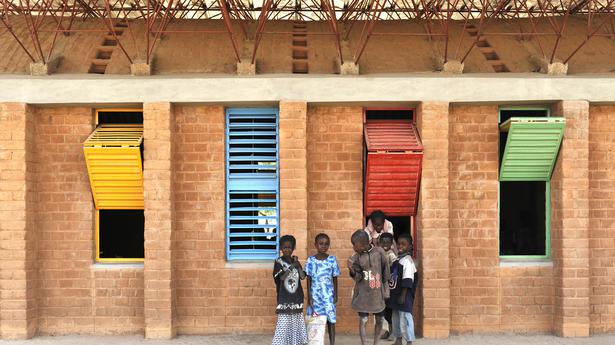
Pritzker Prize 2022 winner Francis Kere is a masterful manipulator of geometry
The Hindu
His work defies categorisation, and pays tribute to his West African roots while also reflecting a buoyant modernism and risk-taking intelligence
The Pritzker Architecture Prize for 2022, the profession’s highest honour, has been awarded to Francis Kere, a West-African architect who, in 20 years of a Berlin-based practice, has created a lyrical portfolio of imaginative buildings. “Through buildings that demonstrate beauty, modesty, boldness, and invention, and by the integrity of his architecture, Kere gracefully upholds the mission of this prize,” says the official statement of the Pritzker Prize committee.
In a world glutted with design sameness and mediocrity, it is rare to find architectural work so exceptional and thoughtful it clearly stands the tests of time and culture; to find that it has been recognised and rewarded for these qualities is itself surprising. Kere’s work defies the normally easy categorisation of architecture, and falls somewhere between cultural relic, social catalyst, and contemporary art. In the first mesmerising glance is visible its West African roots, a buoyant modernism, and a risk-taking intelligence that tests its certain place in an uncertain time.
Other than schools and medical facilities, his work in Africa includes two parliament buildings — the National Assembly of Burkina Faso and Benin National Assembly — as well as the Startup Lions Campus in Kenya, an information technology campus, and the Burkina Institute of Technology, among other projects.
“I grew up in a community where there was no kindergarten, but where the community was your family,” he says. “Everyone took care of you and the entire village was your playground. My days were filled with securing food and water, but also simply being together, talking together, building houses together.”
Set in his own village, his very first building, the Gando Primary School, ensured it did not remind him of the dark dank structures in which he spent much of his childhood. The school is a low oblong structure of vaulted brickwork, supporting a floating roof — a double layer that protects the interior classrooms from the oppressive heat but also allows for continual air circulation. The school’s simple layout masks a complex artistry of engineering that creates thermal comfort in extreme weather conditions. Kere is a masterful manipulator of geometry and mixing diverse materials — part and parcel of a training he received in carpentry, furniture making and roof construction in his early years in Germany.
Much of his work consequently reflects a genuine and felt humanism, the efforts of a man in close touch with his culture and environment, the very currency of invention and discovery.
Nothing suggests these qualities more succinctly than his design response at the Serpentine Pavilion. London’s pastoral green and deadpan English garden setting was fittingly embellished with African colour and texture, in a building that stood its cultural ground and gave a keynote signal firmly rooted in the aspirational state of architecture.













